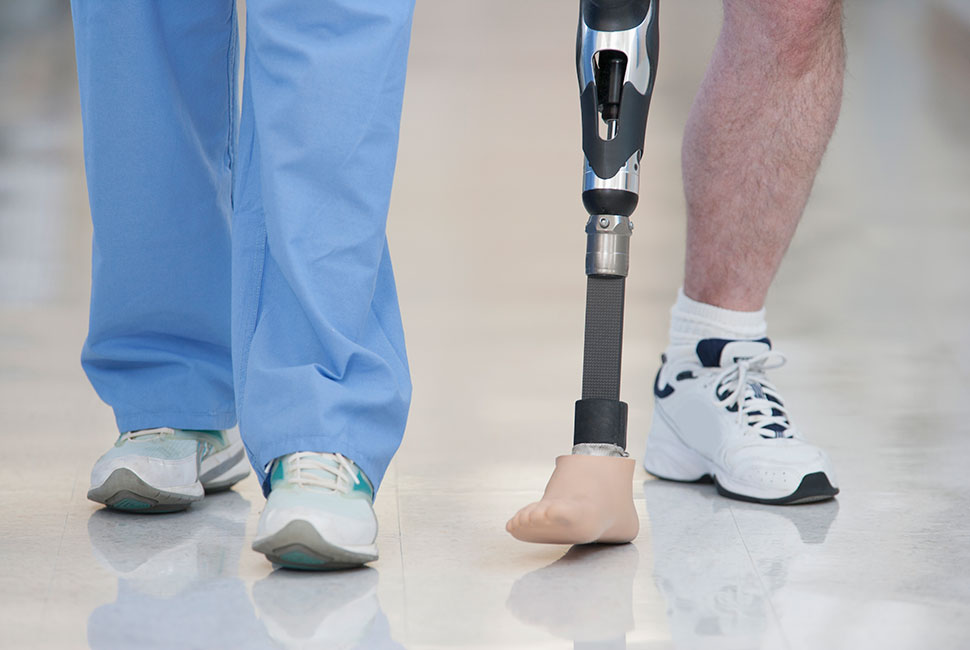Rates of leg and foot amputations in Illinois hospitals increased 65% between 2016 and 2023, reports a new Northwestern Medicine study.
Men, Black patients and those living in areas with low socioeconomic status were disproportionally affected, the study found. The dramatic spike is largely attributed to a growing prevalence of diabetes and peripheral artery disease (PAD), two chronic conditions that often lead to lower extremity amputation, the study authors said.
Unless we make changes in how we care for marginalized communities, I don’t anticipate this getting better.”
“Unfortunately, by the time a patient with diabetes and/or PAD presents with a foot wound or ascending leg infection, their disease might be just too advanced, and amputation may be the only treatment option,” said first author Dr. Maggie Reilly, a vascular surgery resident at McGaw Medical Center of Northwestern University. “The patient population with both diabetes and PAD had the biggest increase in amputation rates.”
Rates of smoking have gone down in recent decades, and improvements in medical therapies, such as greater utilization of statin therapy, should theoretically improve limb salvage, she said. Those positive changes, however, are outpaced by the quickly increasing rates of diabetes and PAD, Reilly said.
“Despite our medical advances, we’re not reaching all the communities that need it,” Reilly said. “It’s creating this bigger divide between people who are getting the necessary preventive care and those who aren’t. Unless we make changes in how we care for marginalized communities, I don’t anticipate this getting better.”
Here are three key takeaways from the study.
- Suffering the burden: In addition to the mental burden, patients undergo at least three months of post-operative care that includes medical appointments to ensure proper healing, followed by therapy to learn how to walk on a prosthetic leg.
- Across the nation: Approximately 150,000 non-traumatic leg amputations occur annually in the U.S. Although this study focused only on Illinois patients, authors said dramatic increases in leg and foot amputations are likely happening nationally.
- Urgent need: Some data suggest that 50% of patients who undergo an above-knee amputation will die in the next 12 months because of the nature of systemic disease, Reilly said, which is why prevention and appropriate management of cardiovascular disease is of dire importance.
Notes
The study was published in the journal Diabetes Research and Clinical Practice. Other Northwestern authors include Isabel Cohen, Samantha Watson, Dr. Karen Ho and Joe Feinglass. Funding was provided by the National Heart, Lung and Blood Institute of the National Institutes of Health.


